Home | Canadian Firsts in Sport | Five Sports Invented in Canada
Basketball
PreviousNext
James Naismith was a remarkable man. Growing up in Ontario in the late 19th Century he excelled at a number of sports and after completing his physical education degree at McGill University became the university's first Athletic Director while also completing three years of theological study at a Presbyterian seminary in Montreal.
At this time, there was a growing recognition that competitive sport could keep young men fit and healthy while also teaching a host of desirable moral values. As a physical educator and chaplain, James Naismith was ideally placed to champion this dual cause and he left McGill University for the Y.M.C.A. (Young Men's Christian Association) training school in Springfield, Massachusetts in1890.
The Y.M.C.A. was a Christian organization formed in the 1850's that aimed to empower youth with a host of humble and capable virtues that overcame the immoral dangers and hardships of the newly forming cities. For the Y.M.C.A., athletic competition motivated young men more than gymnastics and exercise programs that although beneficial were sometimes boring.
One problem for the school came in the winter when the football season had ended. How could they keep these men competitive and motivated in the long winter months and Naismith was asked to create a new indoor competitive game that could occupy his class in healthy, moral ways.
Naismith was guided by his moral principles of combining competition with compassion, courage with collaboration and passion with excellence. He therefore wanted his new game to be free from the natural aggression and violence of football and so ensured that the ball had to be passed often and the goals were placed somewhere difficult to guard.
One afternoon in December 1891, Naismith secured two peach baskets to the insides of the gallery railings ten feet above the gymnasium floor, posted the 'thirteen rules' on the noticeboard, placed a soccer ball on the floor and waited for his class to arrive. While waiting he cannot have imagined how this innocent game would turn into a global sporting phenomenon where kids played in the streets, millions watched on T.V. and stars earned annual salaries in excess of tens of millions of dollars!
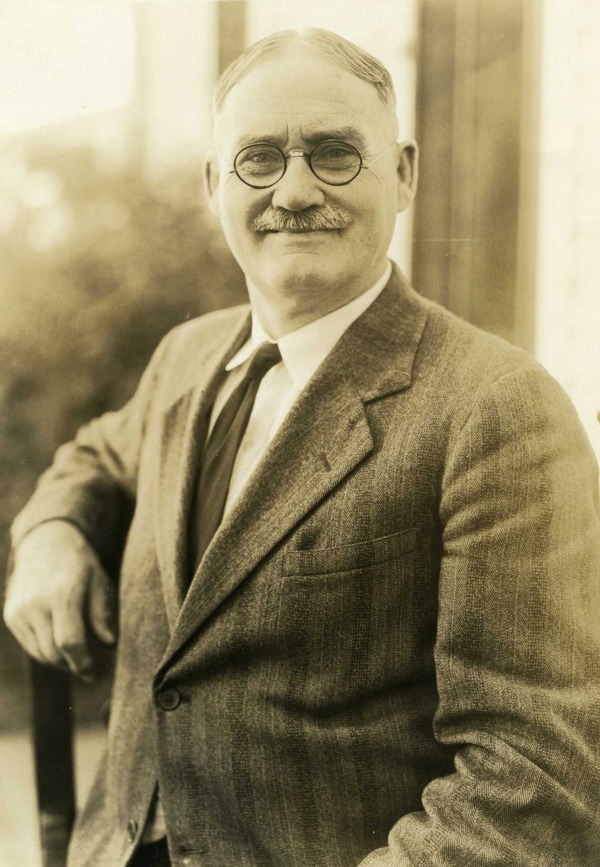
Dr. James Naismith, educator and physician, invented the game of basketball in 1891while teaching at the Springfield, Massachusetts YMCA. Using a soccer ball, two peach baskets, a ladder and 13 written rules he created the game within a two-week period. Basketball grew quickly in popularity and by 1900 was being played at universities across the USA. He lived to see the game being played not only over North America but as an official Olympic sport in 1936.
Collection: Canada's Sports Hall of Fame
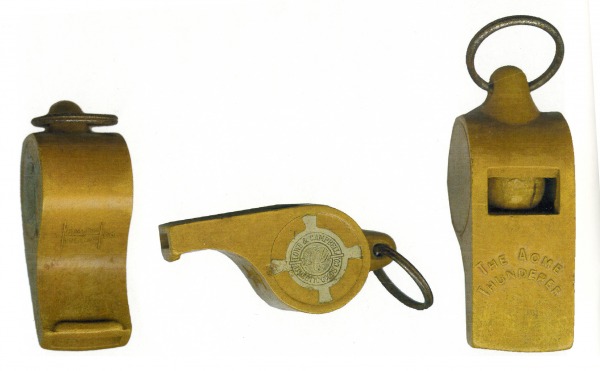
While the first game started off with some rough play, Dr. Naismith quickly adapted the rules to ensure it was a non-contact sport. He only played two official games himself and acted mainly as a coach and official using this whistle. He was a resourceful and creative person and humble, refusing to have the game named after him.
Collection: Private Collection Maple Leaf Sports and Entertainment
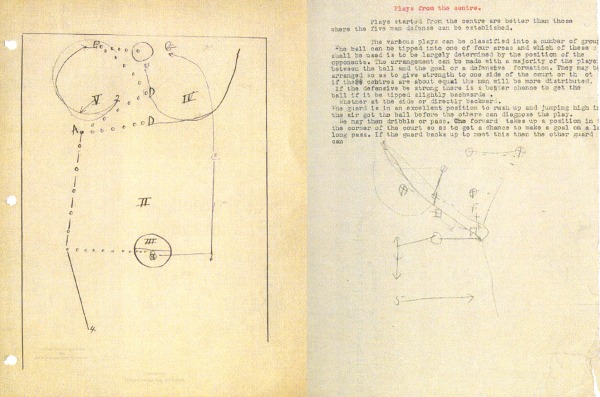
Dr. Naismith wrote the original rule book for basketball. This page from Plays from the Centre includes his typed notes and hand drawn diagrams. Four basic rules were among the first to be adopted, including no running with the ball in hand which led to the practice of 'dribbling', no rough body contact, the horizontal goal above the players' heads and the freedom of any player to obtain the ball and score at any time.
Collection: Private Collection Maple Leaf Sports and Entertainment
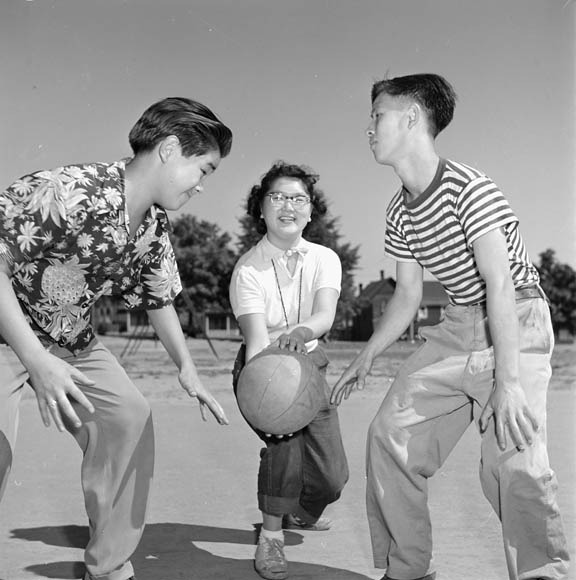
The game of basketball spread quickly after it was first played. International trainees at the Springfield YMCA learned the game and took it home with them. Within only two years, basketball had made its debut in more than a dozen countries, including Canada. As seen in this image from 1951, it became a game that can be played anywhere two or more players can come together.
Collection: Library and Archives Canada
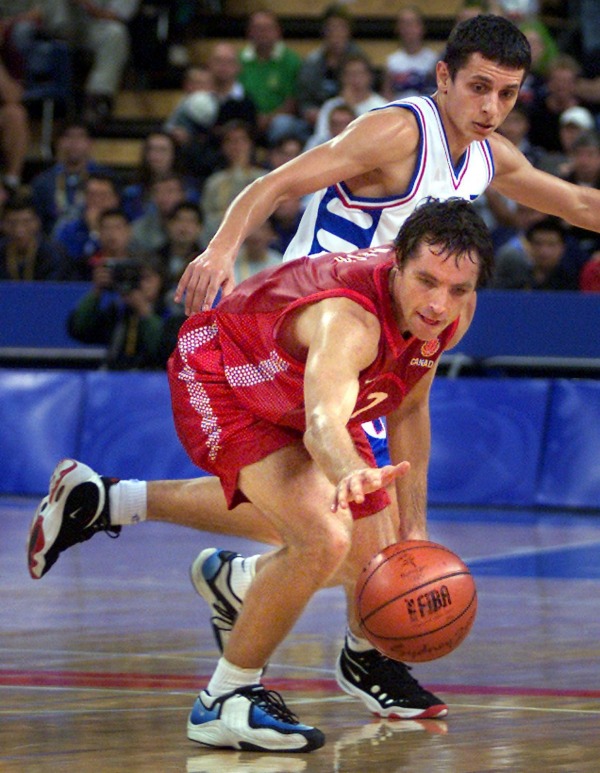
Basketball has been played at the Olympics since the 1936 Olympic Games in Berlin, where Canada took the silver medal. Steve Nash played professionally with in the National Basketball Association (NBA) and for Team Canada at the 2000 Olympic Games in Sydney. His leadership and passion for the game continues with mentoring Canadian basketball athletes.
Collection: CP PHOTO/Kevin Frayer
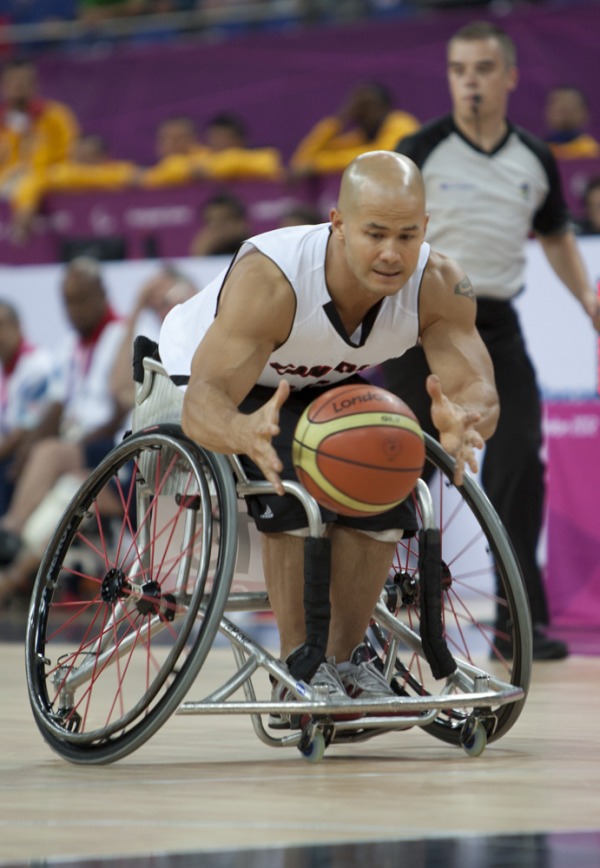
Wheelchair basketball is played by the same major rules and scoring on a standard size basketball court, with the hoop at the 10-ft height. Rules such as travelling are modified with consideration for the wheelchair. Originally intended to assist people with disabilities to participate in sport, today it attracts the able-bodied as well and is played internationally by all genders and age groups.
Collection: Canadian Paralympic Committee/Wheelchair Basketball Canada
Previous Next


